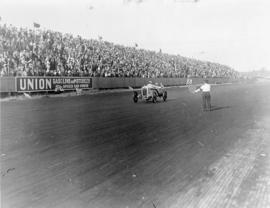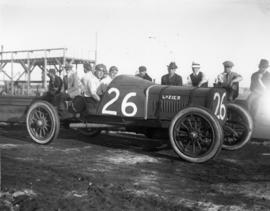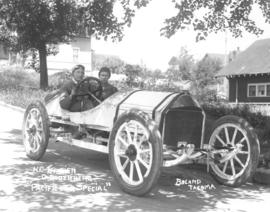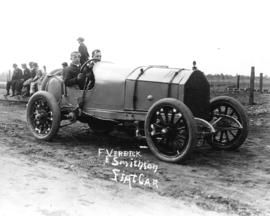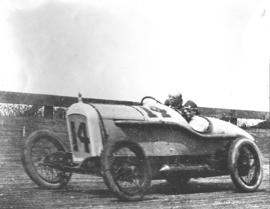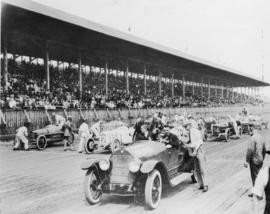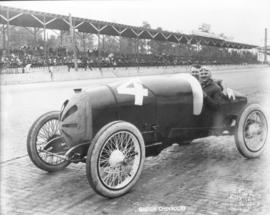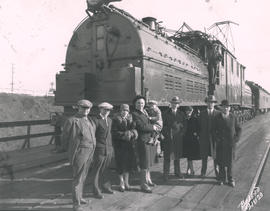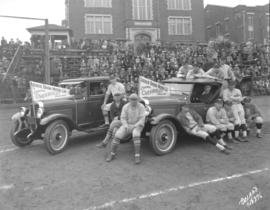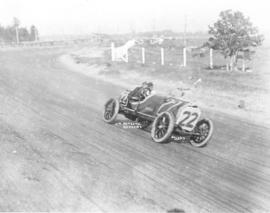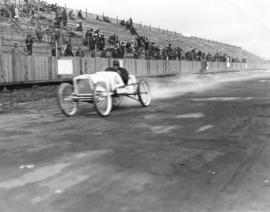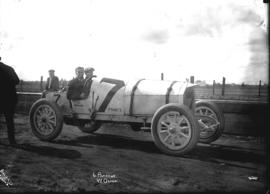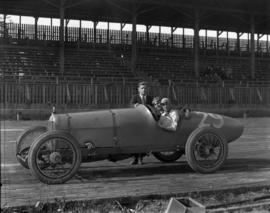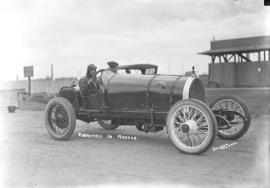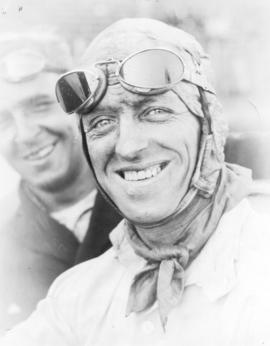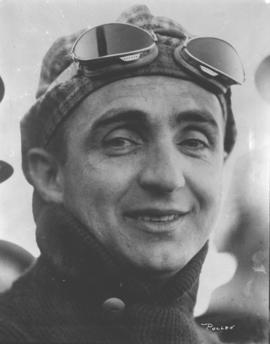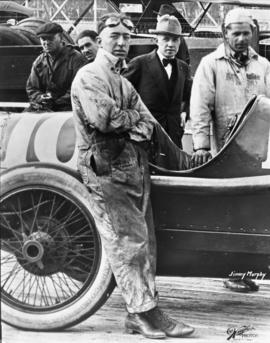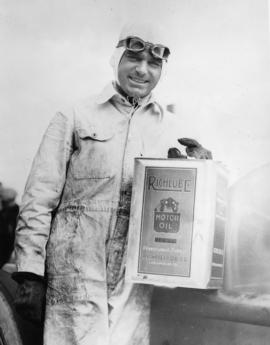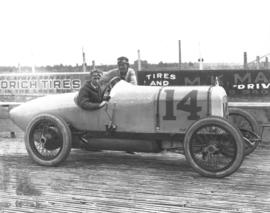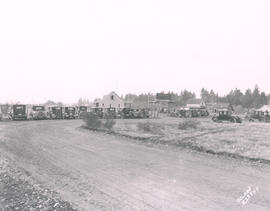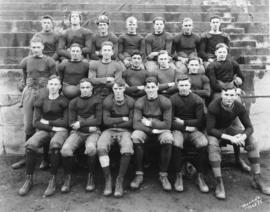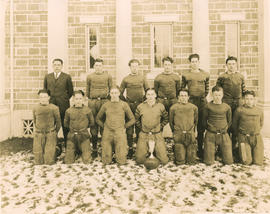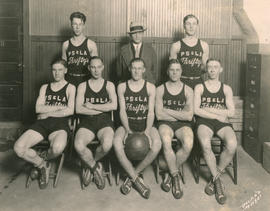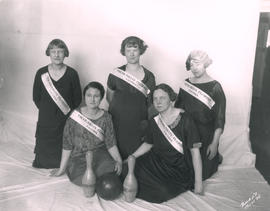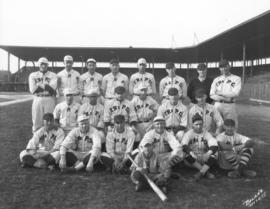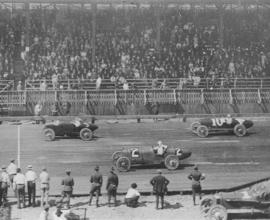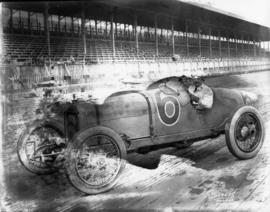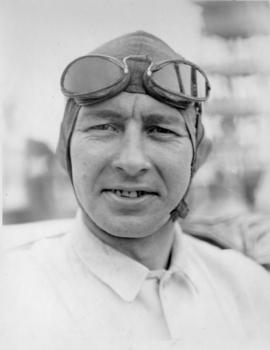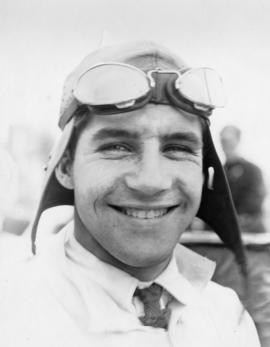- Item
- 1915-07-04
Part of Marvin Boland Photographs
On July 4, 1915, Earl Cooper approaches the checkered flag in his Stutz racing car at the Tacoma Speedway, finishing second in the Montamarathon. The crowd of 20,000 spectators stands and cheers. Cooper had won the 250 mile race in 1913 and 1914 and had hopes of retaining the perpetual trophy for the Montamarathon, second only in importance to Indianapolis's 500. His hopes were dashed by his second place finish at 2: 58: 5. Grover Ruckstell finished first at 2:57. The track's split board planking consisted of 2 x 4 planks which were laid end to end and were a hazard to the car's tires. The race was also marked by the board track's first fatalities. Billy Carlson's Maxwell 17 blew a tire and left the track in the 60th lap, launching both Carlson and his mechanic in the air. The mechanic, Paul Franzen, was killed instantly and Carlson died later that day of injuries. TPL-130, Speedway glass- 040 (Tacoma Tribune 7/5/1915, pg. 1 & 2)
Tacoma Speedway (Lakewood); Racetracks--Lakewood--1910-1920; Automobile racing--Lakewood--1910-1920; Cooper, Earl;
